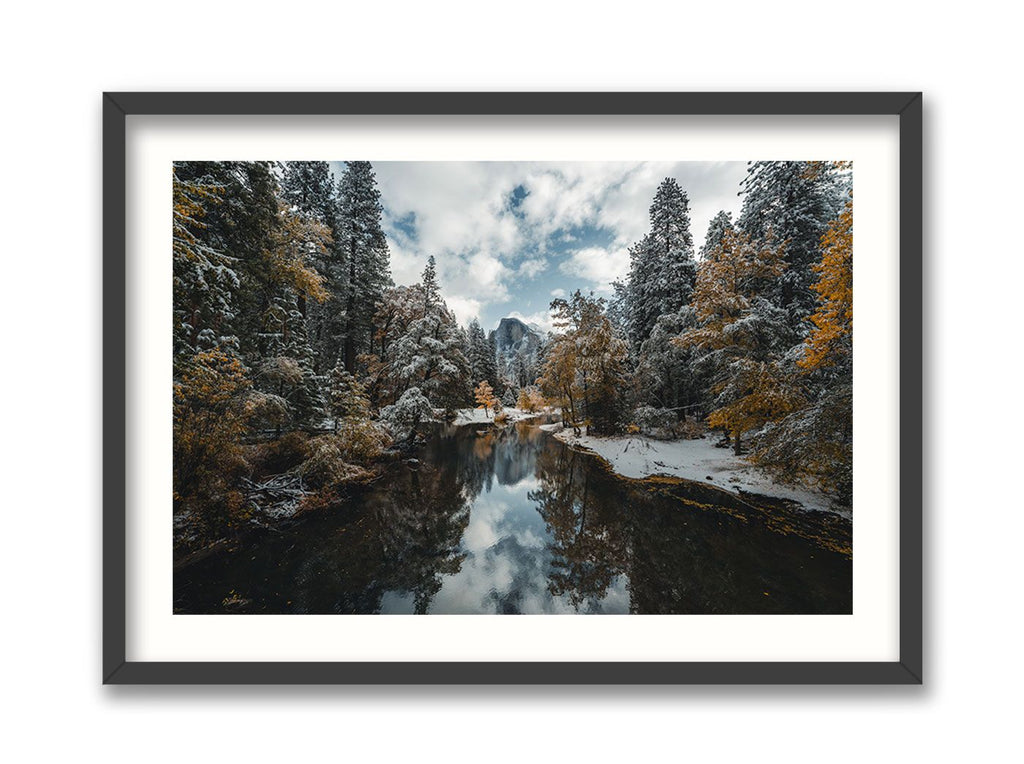Behind the Shot
Between May and September in an average year, about 2.5 million people visit California’s famed Yosemite National Park. Even though the park covers an area of approximately 1,100 square miles, most visitors pack into the 7.5-mile long by 1-mile wide Yosemite Valley. Visitors enjoy amazing views of the park’s granite cliff faces, cascading waterfalls, pine and cedar forests, and open meadows while waiting in traffic jams and long lines. Visitors can camp in the summer heat, which often reaches into the mid 90 degrees, providing they make reservations well in advance. If you are looking for solemnity and a peaceful connection with nature, summer is probably not the best time to visit Yosemite Valley.
In winter, the park is mostly vacant in comparison. Under all but the most extreme weather conditions, the main roads are plowed and clear, with the usual chain requirements and safety precautions noted. Hosting a fraction of the peak-season visitors, most of the Valley’s facilities are open and operating. Cross-country and downhill skiing is open in the Badger Pass Ski Area. Campers can still camp and hikers still hike to Half Dome and the various accessible meadows.
Terry was hoping to catch the last of the fall colors in the park, but instead encountered something unexpected. “It was the first snow of the fall. We were going for fall colors, but wound up getting first snow with the colors. This is one of those classic photo locations, on the Sentinel Bridge over the Merced River, with Half Dome in the background. Catching the snow and the orange leaves was really great. I love it. I just love being out there in nature. It’s so peaceful.”











